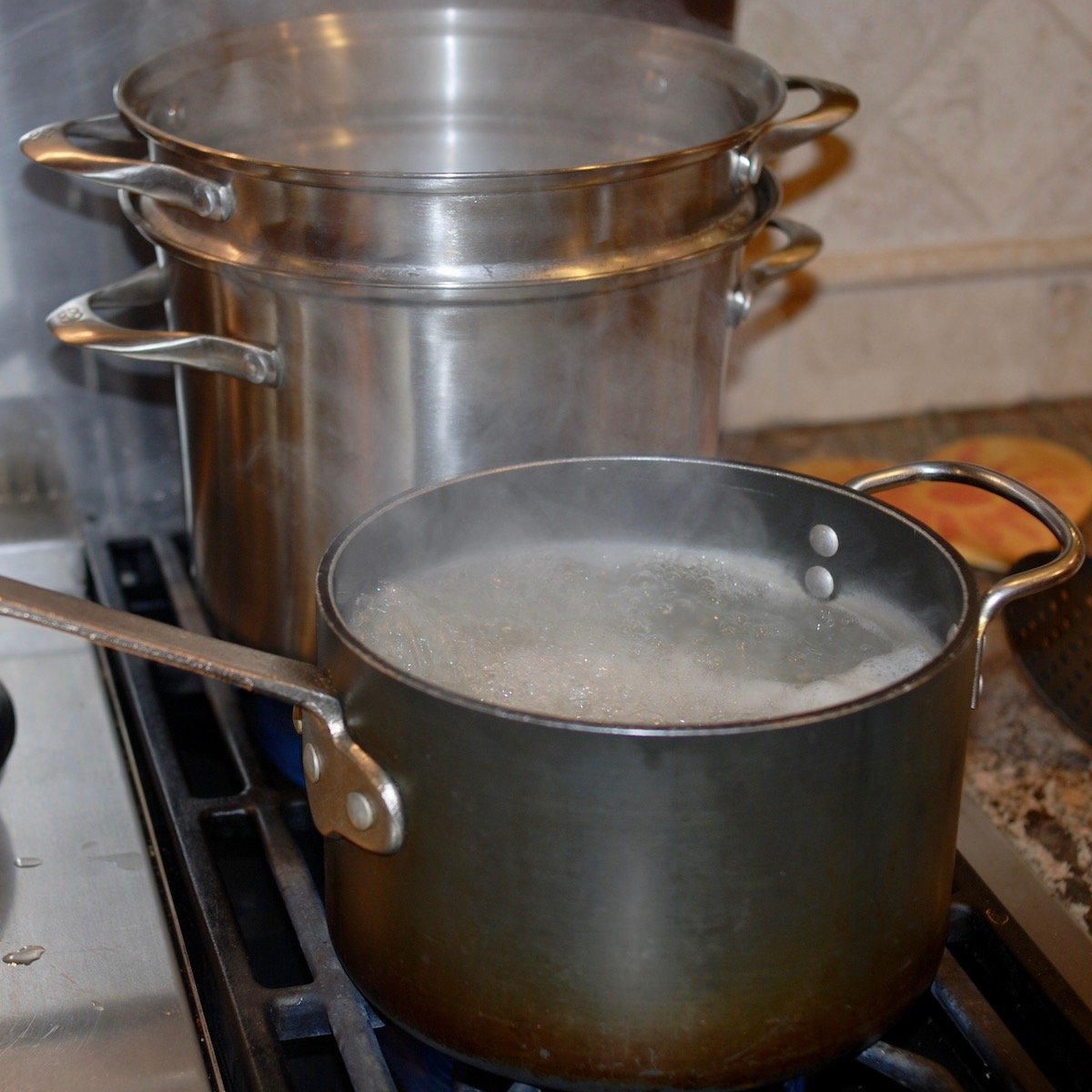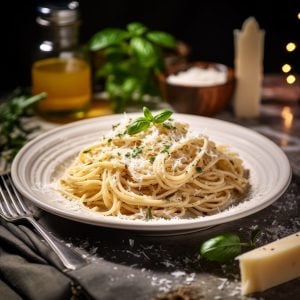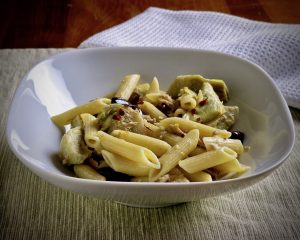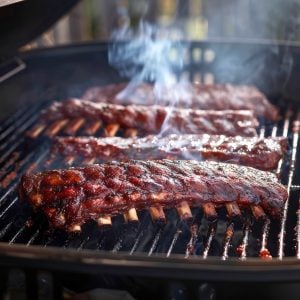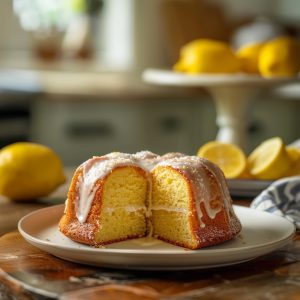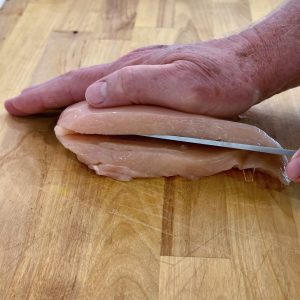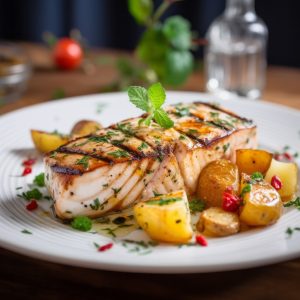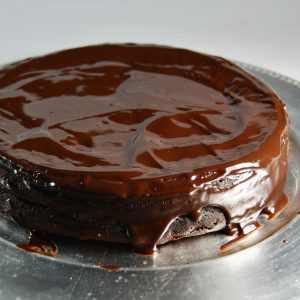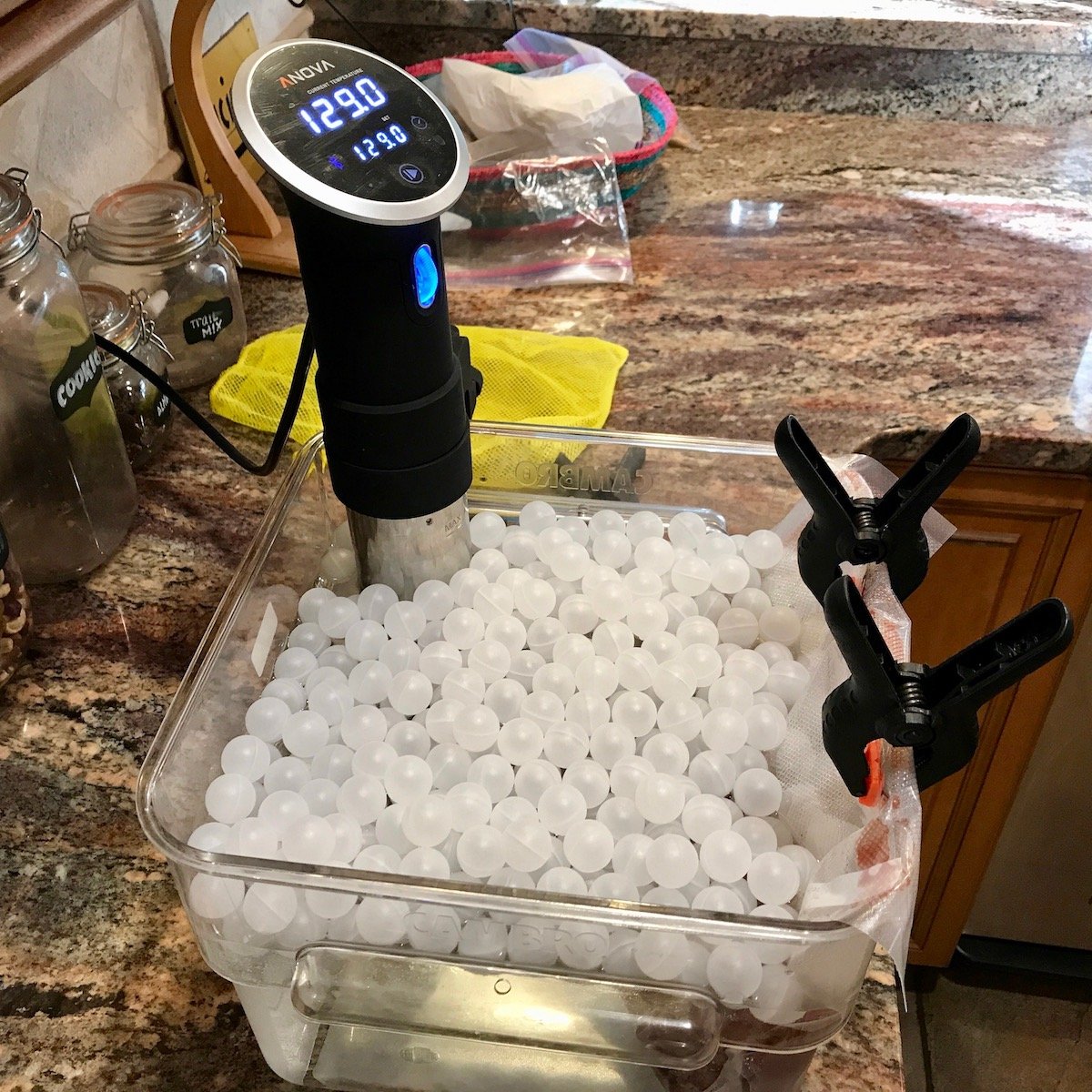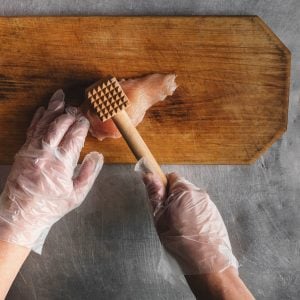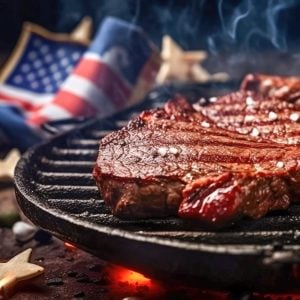How To Boil Water
As a cooking technique, how to boil foods doesn’t get the same respect today as when I was growing up. Back in the day, my mom boiled everything and often.
The problem was she only knew one kind of Boil, a vigorous boil, which we now call a “Full Boil” that often resulted in overcooked, soggy, limp food.
Today I still use a full boil for cooking pasta and hard-boiled eggs or for blanching vegetables, but I also use other boiling techniques like “slow boil,” “poach,” and “simmer.” You may think boiling only occurs at 212°F, but it has much to do with the atmospheric pressure around you.
For example, the boiling point was lower when we lived in Park City, Utah, at higher elevations with low atmospheric pressure. Still, we had to increase the cooking times because the food was cooking at a lower temperature.
A Little Boiling Science
In scientific terms, boiling occurs when the vapor pressure of a liquid is equal to the atmospheric pressure. So that sure clears things up.
In everyday terminology, when water is heated, it turns to vapor. Boiling occurs when vapor bubbles escape liquid by moving fast enough to break the surface of the liquid and through the surrounding air pressure—like Charlie and the Great Glass Elevator: “Must go faster if we’re going to break through!”
And you remember how that ended: CRASH!
Boiling is a pretty violent action. It’s an explosive phase change between a liquid state and a gas state. So anything delicate, like food, that gets in the way of this process can get damaged.
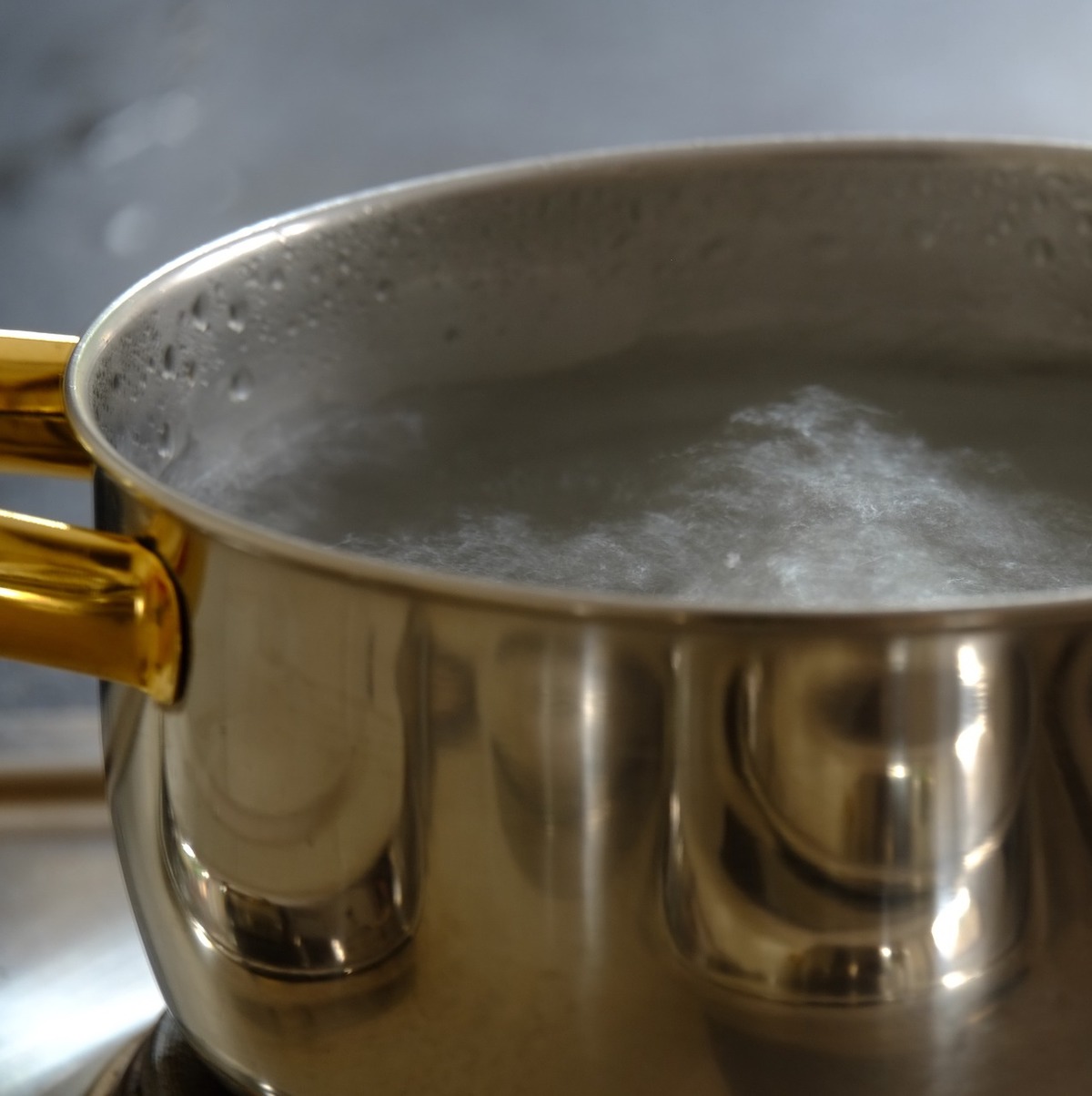
Julia’s Seven Stages of Heating Water
Boiling isn’t entirely as black and white as that, however. As water is heated, it goes through several stages, first identified (or at least written down for culinary purposes) by Julia Child in From Julia Child’s Kitchen.
Tepid – 85°F to 105°F Tepid is not a suitable temperature for cooking, but tepid water has its uses. For example, you can immerse eggs in tepid water to gently raise their temperature before using them in recipes.
Warm – 115°F to 120°F Warm water is used to activate the yeast.
Hot – 130°F to 135°F Not hot enough to cook, but hot enough that you don’t want to put your hand in.
Poach – 180°F to 190°F If you’ll notice, there is quite a gap between “hot” and “poach,” according to Julia Child. I will be audacious enough to differ from her. It is possible to poach at temperatures as low as 140°F, as this is the low end of the scale at which proteins start coagulating. If you want to poach a fish to an internal temperature of 140°F, the gentlest (although not quickest) way is to have the poaching liquid at 140°F. I’m sorry, Julia, but poaching at 190°F might as well be a simmer.
Simmer – 190°F to 200°F The simmer. Most stews and braises are cooked at this relatively low temperature. Gentle bubbling occurs, and the simmering liquid flavors the simmering food as the food flavors the liquid.
Slow Boil – 205°F A slow boil is a lazy boil and is not too much different from a simmer. Bubbles will slowly break over the entire surface of the water.
Full Boil – 212°F A full boil is a vigorous boil with bubbles rapidly and violently breaking over the entire surface of the water.
While it is good to be aware of the seven stages of heating water, it is less necessary, in most cases, to be a stickler for the temperatures at which most of these stages happen. So, for example, one person’s “hot” might be another person’s “very warm,” and as I pointed out, one person’s “poach” might be another person’s “simmer.”
You can use these stages as guidelines only. The temperatures are given for water only. Depending on the liquid, the boiling point could be reached at a higher or lower temperature. The further addition of salt and other flavorings also affects the boiling point.
Generally speaking, there are only so many foods that I advocate cooking at a full rolling boil. Most moist heat cooking methods occur between temperatures of 140°F to 200°F; steaming is the exception, at 212°F. Although steaming occurs at the boiling point, it is a gentler cooking method since food is not immersed in boiling water. Instead, it is cooked by the heat of the rising water vapor. Another point to consider is nutrition.
Many water-soluble vitamins can leach into the cooking liquid during the boiling process. If you drain away your boiling liquid, you are throwing away a lot of nutrients. If possible, serve the cooking liquid as part of the dish to maintain the food’s nutritional value.
Because of the violent nature of the full boil and the potential loss of nutrients, only a few foods should be cooked at a full, rolling boil. One of them is dried pasta. However, fresh pasta may be too delicate to be cooked above a slow boil.
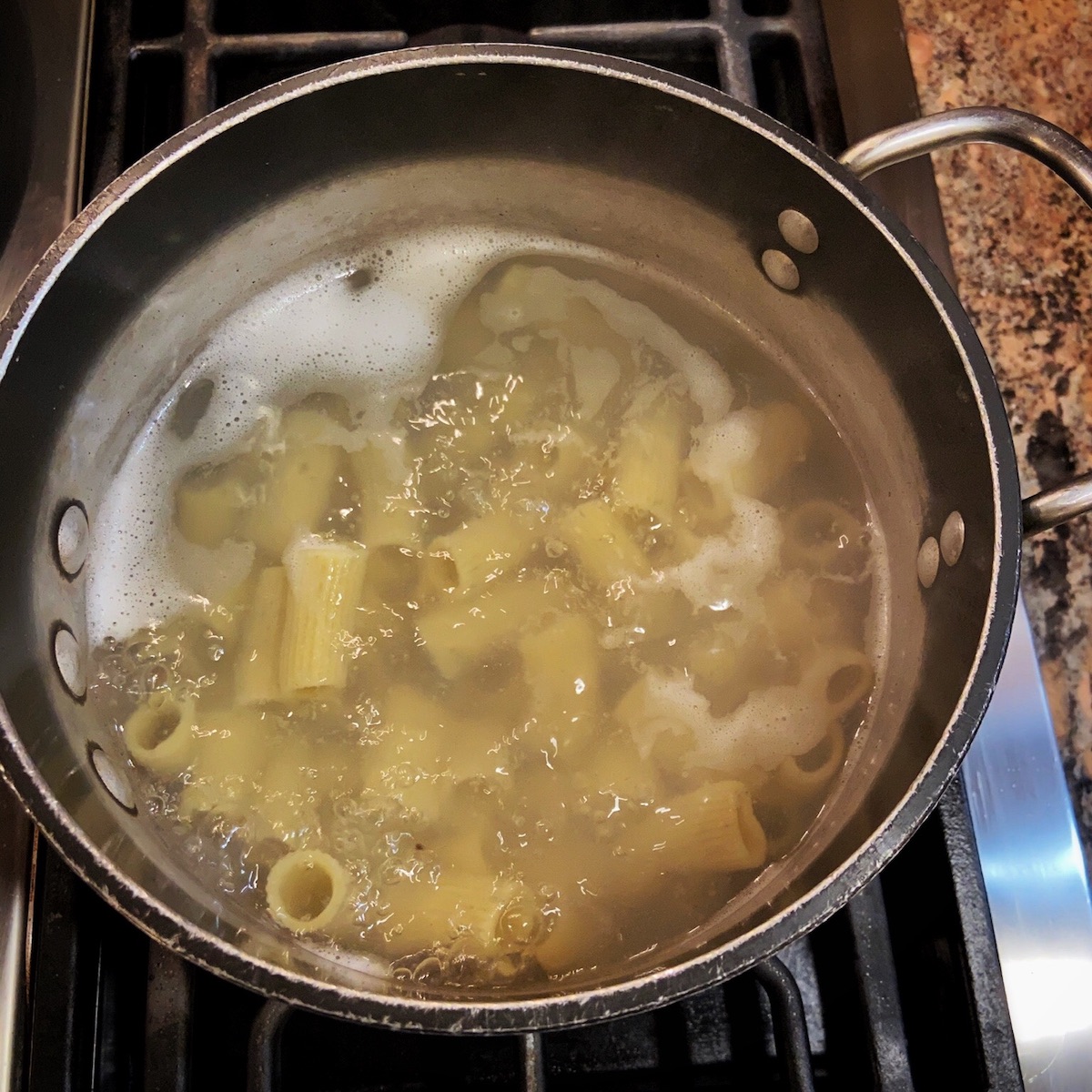
Cooking In Liquid or, As Some Say, Moist Heat Cooking Techniques
Rather than saying boiling techniques, let’s call it cooking in liquids or moist heat cooking. The difference between poaching and simmering & simmering and full boil is only a matter of a few degrees, but those few degrees make a big difference.
I would say simmering is not boiling, although, by definition, tiny bubbles rise to the top and break the surface, so it is imperative to know the difference between a simmer and a slow boil because each can have a dramatic effect on what you are cooking. For example, can you imagine if a recipe said to simmer a sauce for 10 minutes to reduce it, but you cooked it at full Boil instead? What a disaster you would have!
We’ll look at these Moist Heat Cooking Techniques and see where and how you should use them. Then, I’ll start working on a chart to show the differences, but you can start by reading my post on poaching.
You may also want to look at How to Blanch Foods, a two-step process for cooking foods.
Another moist heat cooking technique is stewing, and I have an informative article on How to Make a Great Stew Recipe that you may find helpful.
And, of course, you will want to check out my post on How to Cook Pasta to demonstrate the Full Boil technique.

